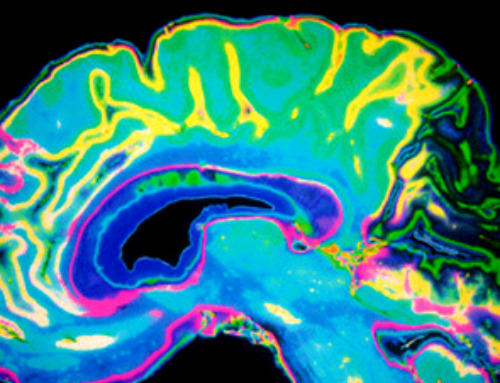A groundbreaking study evaluates the feasibility, risks, and ethical considerations of creating mirror bacteria with reversed chirality, highlighting potential threats to health and ecosystems.
In a recent study published in Science, a team of researchers investigated and discussed the potential roadblocks to and risks of “mirror life,” where life forms are synthesized using biomolecules with reversed chirality compared to natural life.
The researchers assessed the feasibility, safety concerns, and governance strategies to address the unprecedented risks posed by these synthetic life forms.
Background
Natural life is characterized by specific molecular chirality, with ribonucleic acid (RNA), deoxyribonucleic acid (DNA), and proteins being composed of specific enantiomers.
Advances in synthetic biology now allow for the synthesis of mirror-image biomolecules, which are resistant to degradation and hold promise for therapeutic applications.
Furthermore, the creation of mirror organisms, such as mirror bacteria, represents a significant advancement in biological engineering that can combine these mirror-image biomolecules into viable life forms.
However, while synthetic mirror molecules offer some benefits, the construction of mirror organisms also raises significant concerns. Such entities could evade immune responses, resist natural predators, and potentially proliferate uncontrollably, presenting risks to health and ecosystems.
Although existing studies have explored the functionality of these mirror biomolecules, a comprehensive risk assessment for mirror organisms is lacking.
The growing technical feasibility of creating mirror life highlights the need for deeper understanding, ethical considerations, and regulatory measures to address potential dangers and to balance scientific progress with public safety.
About the study
The present study analyzed the feasibility and risks associated with creating mirror bacteria using mirror-image biomolecules. The team, consisting of experts in synthetic biology, immunology, ecology, and biosecurity, assessed the technical challenges and potential hazards of mirror life.
They focused on the likelihood of mirror bacteria surviving and spreading in natural and host environments, with specific attention to their interactions with immune systems and ecosystems.
The analysis highlighted key technical hurdles in constructing mirror bacteria, including synthesizing complex mirror molecules such as DNA, proteins, and ribosomes. Furthermore, the researchers identified and discussed the two potential methods for constructing mirror organisms.
The study also examined how mirror bacteria might evade immune defenses, given the importance of chirality to immune recognition. Additionally, the researchers emphasized the risk of ecological invasion and compared mirror bacteria to invasive species that thrive without natural predators.
Results
The study reported that mirror bacteria could evade immune responses and disrupt ecosystems, posing significant risks. These organisms were expected to resist common immune mechanisms, such as antigen presentation and antibody production, potentially allowing unchecked growth.
Mirror bacteria were also predicted to survive environmental challenges, avoiding predation and natural microbial competition due to their reversed chirality.
The researchers determined that reversed chirality makes mirror biomolecules resistant to immune recognition and predation, enabling their survival and proliferation in natural environments. Such bacteria could potentially cause severe infections in humans, animals, and plants due to impaired immune defenses.
Furthermore, the findings indicated that mirror bacteria could potentially also resist degradation from immune processes, such as antigen presentation and antibody generation.
Vertebrate immune systems, which rely on these mechanisms, would likely be ineffective against mirror pathogens. Invertebrates and plants may also experience compromised immune responses.
The experimental data indicated that mirror proteins could also be resistant to cleavage and may not effectively trigger adaptive immune mechanisms, supporting the predictions about the severe pathogenic potential of these organisms.
Beyond health risks, the authors predicted that mirror bacteria could also evade natural microbial competitors and predators, including bacteriophages and antibiotics, due to their unique chirality.
This could allow them to colonize various environments, much like invasive species with limited natural controls.
Even with proposed biocontainment measures, such as engineered dependencies on synthetic nutrients, the potential for escape and misuse remains significant. The researchers stated that physical containment measures, while helpful, are vulnerable to accidents and failures.
The capacity of the mirror bacteria to exploit achiral nutrients and engineered pathways for consuming common nutrients further increases their potential to thrive outside laboratory settings.
The analysis also highlighted the potential for ecological imbalance. The persistent presence of mirror bacteria in ecosystems could lead to global dissemination, evolution, and harm to biodiversity. Even stringent biocontainment measures might fail to prevent accidental or even deliberate release.
Conclusions
In summary, the study stated that while mirror biomolecules offer valuable scientific applications, the risks of creating mirror bacteria far outweigh the potential benefits.
The study stated that creating mirror bacteria poses extraordinary risks to health and ecosystems due to immune evasion and ecological disruption, and the findings called for stringent policies to prevent the development of mirror organisms.
Preventing the development of mirror organisms ensures public safety while allowing progress in beneficial areas of synthetic biology. Furthermore, the team emphasized that collaboration among scientists, policymakers, and stakeholders is essential to mitigate these risks responsibly.
- Adamala, Katarzyna P, Agashe, D., Belkaid, Y., Matias, D., Cai, Y., Chang, M. W., Chen, I. A., Church, G. M., Cooper, V. S., Davis, M. M., Devaraj, N. K., Endy, D., Esvelt, K. M., Glass, J. I., Hand, T. W., Inglesby, T. V., Isaacs, F. J., James, W. G., Jonathan, & Kay, M. S. (2024). Confronting risks of mirror life. Science, 0(0), eads9158. doi:10.1126/science.ads9158. https://www.science.org/doi/10.1126/science.ads9158
News
Researchers highlight five pathways through which microplastics can harm the brain
Microplastics could be fueling neurodegenerative diseases like Alzheimer's and Parkinson's, with a new study highlighting five ways microplastics can trigger inflammation and damage in the brain. More than 57 million people live with dementia, [...]
Tiny Metal Nanodots Obliterate Cancer Cells While Largely Sparing Healthy Tissue
Scientists have developed tiny metal-oxide particles that push cancer cells past their stress limits while sparing healthy tissue. An international team led by RMIT University has developed tiny particles called nanodots, crafted from a metallic compound, [...]
Gold Nanoclusters Could Supercharge Quantum Computers
Researchers found that gold “super atoms” can behave like the atoms in top-tier quantum systems—only far easier to scale. These tiny clusters can be customized at the molecular level, offering a powerful, tunable foundation [...]
A single shot of HPV vaccine may be enough to fight cervical cancer, study finds
WASHINGTON -- A single HPV vaccination appears just as effective as two doses at preventing the viral infection that causes cervical cancer, researchers reported Wednesday. HPV, or human papillomavirus, is very common and spread [...]
New technique overcomes technological barrier in 3D brain imaging
Scientists at the Swiss Light Source SLS have succeeded in mapping a piece of brain tissue in 3D at unprecedented resolution using X-rays, non-destructively. The breakthrough overcomes a long-standing technological barrier that had limited [...]
Scientists Uncover Hidden Blood Pattern in Long COVID
Researchers found persistent microclot and NET structures in Long COVID blood that may explain long-lasting symptoms. Researchers examining Long COVID have identified a structural connection between circulating microclots and neutrophil extracellular traps (NETs). The [...]
This Cellular Trick Helps Cancer Spread, but Could Also Stop It
Groups of normal cbiells can sense far into their surroundings, helping explain cancer cell migration. Understanding this ability could lead to new ways to limit tumor spread. The tale of the princess and the [...]
New mRNA therapy targets drug-resistant pneumonia
Bacteria that multiply on surfaces are a major headache in health care when they gain a foothold on, for example, implants or in catheters. Researchers at Chalmers University of Technology in Sweden have found [...]
Current Heart Health Guidelines Are Failing To Catch a Deadly Genetic Killer
New research reveals that standard screening misses most people with a common inherited cholesterol disorder. A Mayo Clinic study reports that current genetic screening guidelines overlook most people who have familial hypercholesterolemia, an inherited disorder that [...]
Scientists Identify the Evolutionary “Purpose” of Consciousness
Summary: Researchers at Ruhr University Bochum explore why consciousness evolved and why different species developed it in distinct ways. By comparing humans with birds, they show that complex awareness may arise through different neural architectures yet [...]
Novel mRNA therapy curbs antibiotic-resistant infections in preclinical lung models
Researchers at the Icahn School of Medicine at Mount Sinai and collaborators have reported early success with a novel mRNA-based therapy designed to combat antibiotic-resistant bacteria. The findings, published in Nature Biotechnology, show that in [...]
New skin-permeable polymer delivers insulin without needles
A breakthrough zwitterionic polymer slips through the skin’s toughest barriers, carrying insulin deep into tissue and normalizing blood sugar, offering patients a painless alternative to daily injections. A recent study published in the journal Nature examines [...]
Multifunctional Nanogels: A Breakthrough in Antibacterial Strategies
Antibiotic resistance is a growing concern - from human health to crop survival. A new study successfully uses nanogels to target and almost entirely inhibit the bacteria P. Aeruginosa. Recently published in Angewandte Chemie, the study [...]
Nanoflowers rejuvenate old and damaged human cells by replacing their mitochondria
Biomedical researchers at Texas A&M University may have discovered a way to stop or even reverse the decline of cellular energy production—a finding that could have revolutionary effects across medicine. Dr. Akhilesh K. Gaharwar [...]
The Stunning New Push to Protect the Invisible 99% of Life
Scientists worldwide have joined forces to build the first-ever roadmap for conserving Earth’s vast invisible majority—microbes. Their new IUCN Specialist Group reframes conservation by elevating microbial life to the same urgency as plants and [...]
Scientists Find a Way to Help the Brain Clear Alzheimer’s Plaques Naturally
Scientists have discovered that the brain may have a built-in way to fight Alzheimer’s. By activating a protein called Sox9, researchers were able to switch on star-shaped brain cells known as astrocytes and turn them into [...]





















